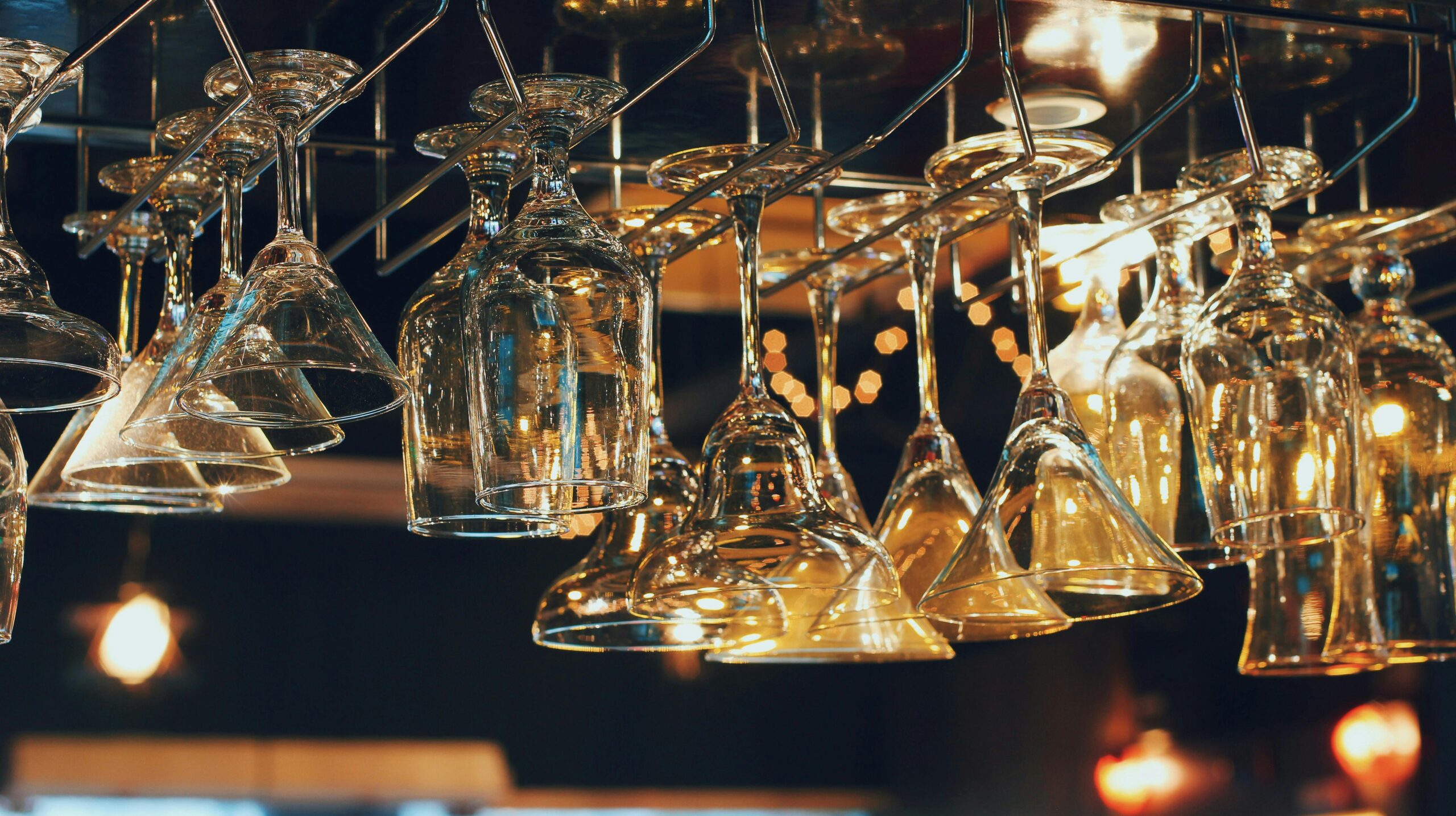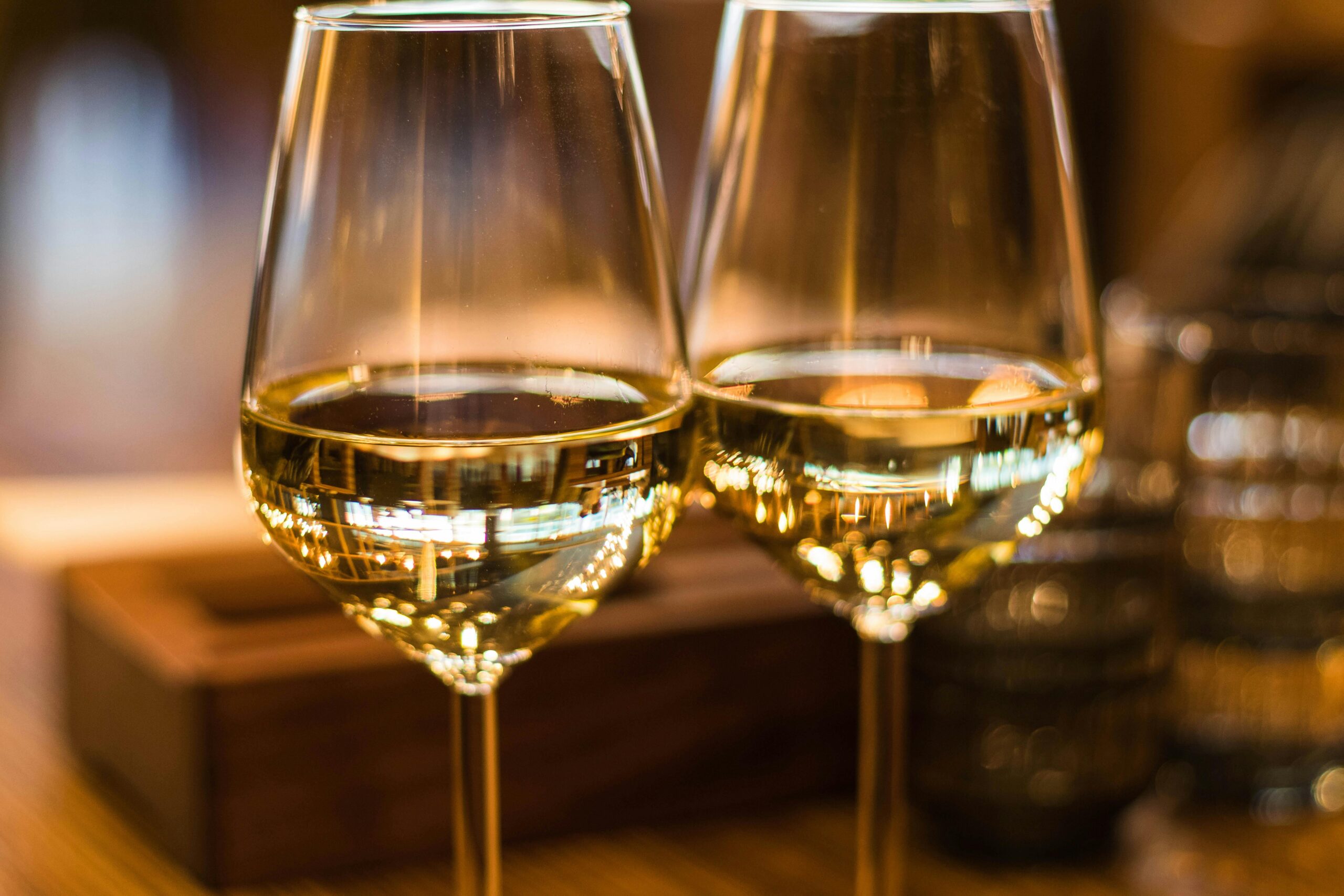 By Charli Tanner
By Charli Tanner
Large bowl, short stem, wider rim…there are several different wine glass styles, and they all play a pivotal role in your drinking experience. However, with so much choice, selecting the right glass for the type of wine you are drinking can be a bit intimidating.
Here’s a tip. Wine glass shapes are categorized by type of wine and its varietal. This is a great starting point, but there’s more to consider. So, if you want to ensure you enjoy the best possible drinking experience, read on to find out which wine gets what glass and why!
Functionality Of The Glass
A wine glass is purposefully shaped and made up of the base—or foot—that allows the glass to stand. Connecting the base to the bowl is the stem, which is what you hold when drinking to ensure you don’t get fingerprints on the bowl of the glass. The stem is also designed to make it easier to swirl the wine when tasting it and to stop your hand from warming up the wine.
The bowl is the most important part of the glass as it holds the wine and it impacts your tasting experience. When pouring wine into any glass shape, it’s recommended that you do so into the widest part of the bowl, as this will allow the beautiful aromas to collect and provide maximum aeration. The bowl will also aid you in swirling, helping to oxygenate it and release the nose of the wine.
Red Wine Glasses
These tall and beautiful-looking glasses have a large bowl to capture the aromatics of the different wines and allow them to come into contact with more oxygen. This process is referred to as ‘opening up’ a wine and allowing it to breathe.
Red wine glasses are designed to bring out the best in the wine, and the following glass shapes are most suitable for the following wine types:
Cabernet / Bordeaux / Merlot
This is the tallest of the red wine glasses, with a large bowl that tapers toward the top of the glass. It’s designed to hold the bolder red wines, as it allows the wine to oxygenate and the ethanol to evaporate, making for smooth drinkability and bringing out the nose of the wine.
Shiraz / Sangiovese / Syrah / Malbec
Shorter than the red wine glass used for bolder red wines, it has a smaller bowl shape and a narrower opening designed to collect the bouquet of the wine. The glass is designed for a medium-bodied wine as it’s usually more intense. The smaller opening allows the wine to be enjoyed more slowly, softening the intensity.
Burgundy / Pinot Noir
These are the shortest and widest of the red wine glass range and are more commonly used for Burgundy and Pinot Noir cultivars. A shorter stem helps support the wider bowl on this glass, which is purposefully designed to hold the bold aroma and ensures that it hits your palette in the correct spot. This design helps you to experience the wine as intended. The wider bowl allows for a larger surface area of the wine to be in contact with oxygen, helping the wine breathe and its flavor develop.
White Wine Glasses
Aside from the chardonnay glass, white wine glasses are shorter and have a smaller bowl in comparison to their red wine counterpart. White wine generally has a much lighter body and nose, so the smaller bowl and shorter glass are designed to concentrate the wine’s aromas on your nose, giving you the full experience.
Sauvignon Blanc / Riesling
These cultivars can be served in the same style of glass. The bowl is U-shaped, which slightly tapers in toward the top of the glass. The capacity of the bowl is much less than that of red wine glasses, and the design concentrates the wine’s unique scent. It preserves the acidity of the wine and minimizes the surface area of the wine that comes into contact with oxygen, as this can impact the flavor and enjoyment of the varietal.
Chardonnay
The outlier in glass shape, the Chardonnay glass has a wider, larger bowl similar to that of the red wine glass and the opposite of Sauvignon Blanc or Riesling glassware. The stem is much shorter by comparison. The wine has a larger surface area due to the bowl’s size and width, making it ideal for oaked Chardonnays that have a much fuller body and are bolder on the palette.
Rosé: Young / Mature
Rosé falls into its own category, with two different wine glass types depending on the maturation of the wine. A younger rosé is served in a glass with a flared lip, which helps to draw out the crispness of the wine and helps accentuate its sweetness.
A mature rosé would typically be served in a glass with a short, wide bowl that tapers in slightly near the top. The shape of the glass is designed to push the wine’s aroma to the top of the glass, giving you the full tasting experience.
Bubbles: Sparkling Wine / Champagne / Prosecco
Sparkling wines or champagne are generally served in glasses to preserve the carbonation and concentrate the aromatic nose.
Flute glasses are typically used for champagne or sparkling wine. The narrow glass and small opening help to contain the carbonation and highlight the bubbles.
Tulip-shaped glasses used to serve prosecco have a slightly wider bowl at the top than the flute. This allows the aromas to be directed to the tongue instead of the nose, which enhances the flavor.
Fortified Wine Glass
The glass used for fortified wines like Sherry is known as a Copita. This tulip-shaped glass is small in stature, with a small bowl. Fortified wines are usually high in alcohol, so the smaller bowl accommodates the appropriate amount for tasting. The narrow opening concentrates the bouquet of the wine, delivering it straight to your nose.
Pick A Wine Glass That Suits Your Style
These days, you’ll find a whole lot more than just the traditional wine glasses. From stemless glasses to goblets, you can drink wine out of a glass that suits your style! However, always remember that the shape of a glass is paramount to enhancing flavor, bringing out the wine’s nose, and creating a sensory experience. With the right glass, you can perk up a wine or mellow down its intensity, ensuring that it’s enjoyed the way it should be.
Following these guidelines will help you select the right glass and savor every sip of wine even more. Enjoy every drop!

